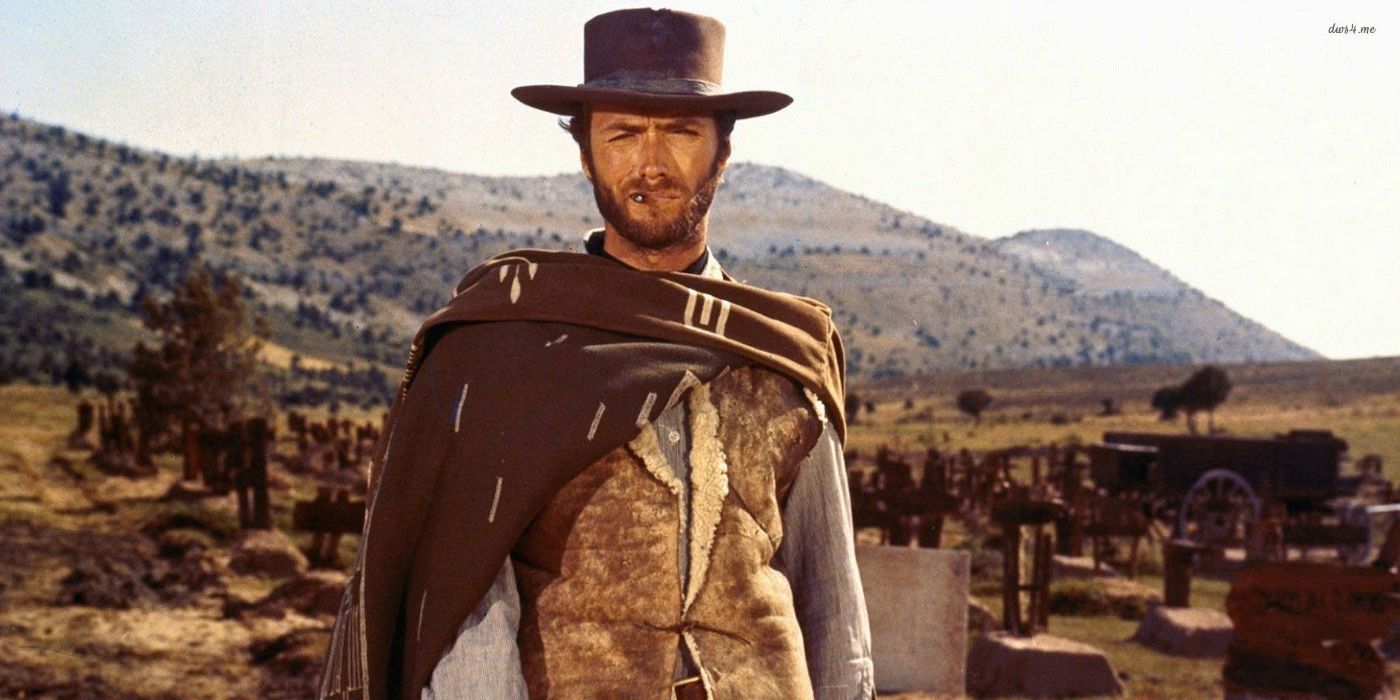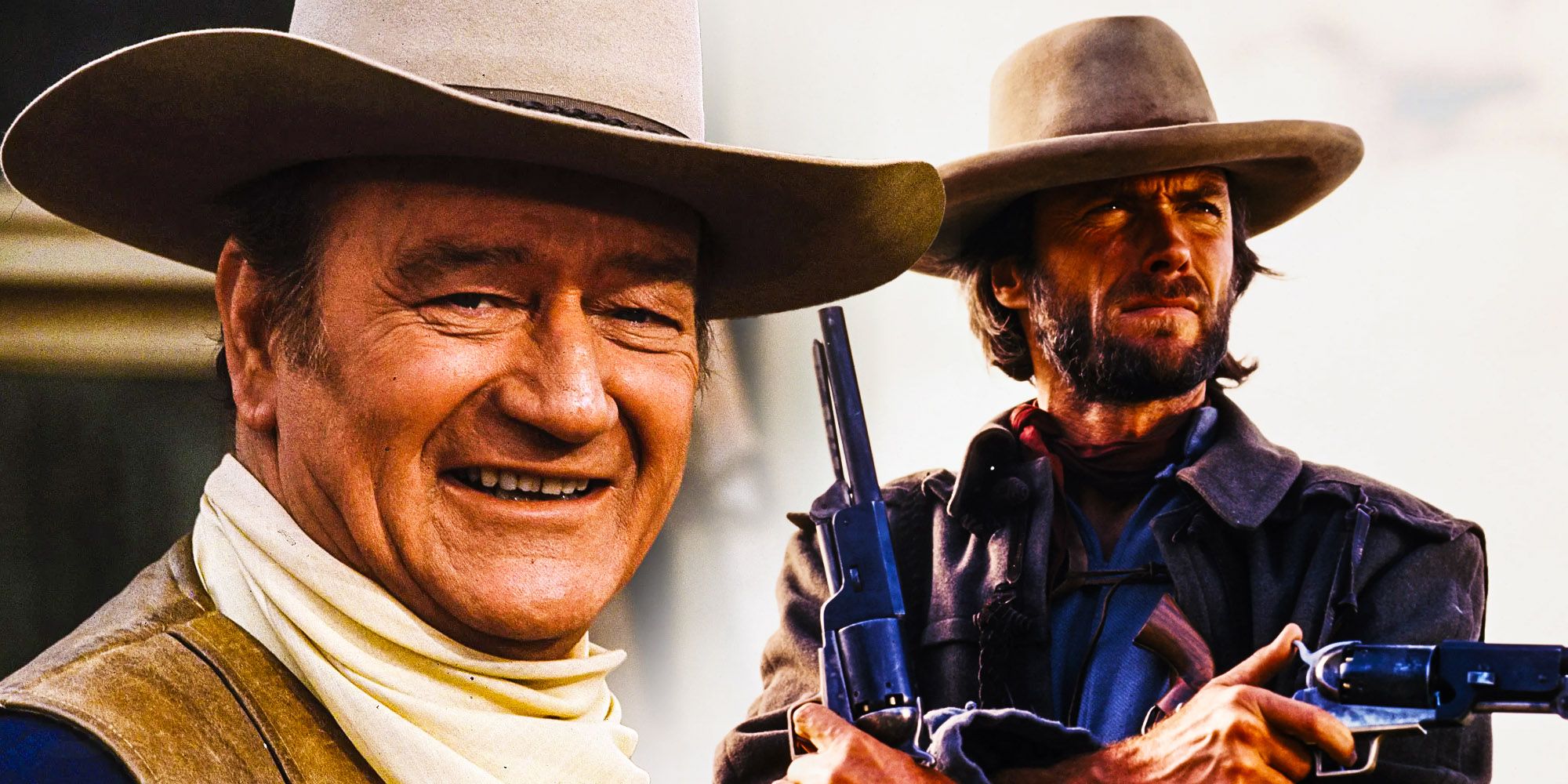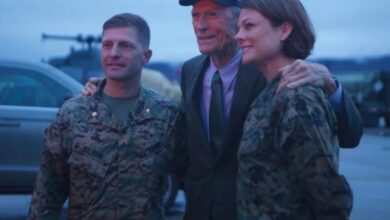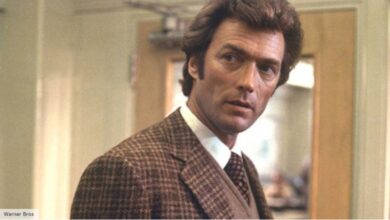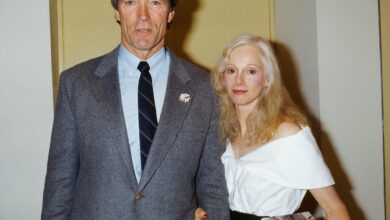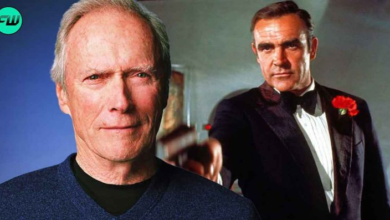The Western Genre’s Real-Life Showdown: Clint Eastwood & John Wayne’s Feud Explained
Though Wayne and Eastwood are forever married to the Western genre, their relationship was fractured and uneasy, leaving them with no collaborations.
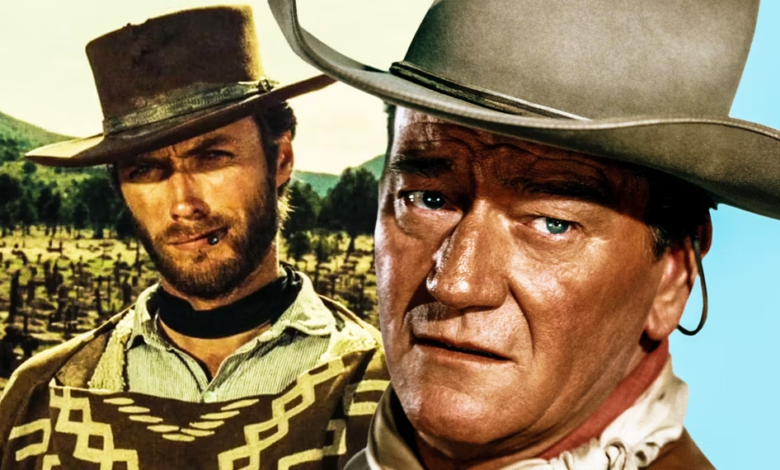
SUMMARY
- John Wayne and Clint Eastwood clashed over their differing views on the Western genre, leading to their inability to star together on the big screen.
- Clint Eastwood’s emergence in the gritty spaghetti Western subgenre challenged John Wayne’s traditional view of Westerns and the ideals associated with them.
- John Wayne refused to work with Clint Eastwood on a Western film due to his belief that it favored Eastwood’s style, which was not aligned with Wayne’s own vision of the genre.
Though they are likely the two biggest names in the Western genre, John Wayne and Clint Eastwood didn’t get along which killed any hopes of them starring together on the big screen. Whereas John Wayne had been a mainstay in the genre since his acclaimed breakthrough role in John Ford’s Stagecoach (1939), Clint Eastwood — nearly 25 years Wayne’s junior — didn’t arrive until his unveiling as a leading man in Sergio Leone’s Dollars trilogy (1964 – 1966). The apparent succession was difficult for Wayne, who was also dismayed by the dark transition that the genre was making, coinciding with Eastwood’s rise to fame.
Though it would not be fair to blame Eastwood for the emergence of the gritty spaghetti Western subgenre which refuted the classic Western’s unending romanticism for its depicted era, his elevation to gunslinging mainstay was only possible because of Sergio Leone. Just as Wayne and Ford are forever synonymous, as are Eastwood and Leone. Wayne outright condemned the evolution the Western genre underwent in the 1960s, refusing to star alongside Clint Eastwood even though Clint Eastwood was eager to work with him. Because the two subgenres of Wild West movies were never reconciled, it meant inevitably that Wayne and Eastwood would never be either.
John Wayne Hated Eastwood’s Take On The Western
Wayne’s Traditional View Of Westerns Was Challenged By A More Rebellious New Era
John Wayne and director John Ford together epitomized the early 20th-century dedication to portrayals of the Old West: charming, starry-eyed, and probably a bit out of touch. Though many from the era were still alive by the time of the genre’s golden age, its most popular additions were stubbornly inaccurate and over-idyllic. When Clint Eastwood — and the spaghetti subgenre with which he was best associated — came along, the ideals of unambiguous morality, American Exceptionalism, and Manifest Destiny were torn apart. Wayne, perpetually patriotic and conservative, was opposed to such progressiveness and was particularly irritated by Eastwood’s rising star, which arguably came to surpass his own for a time in the 1960s.
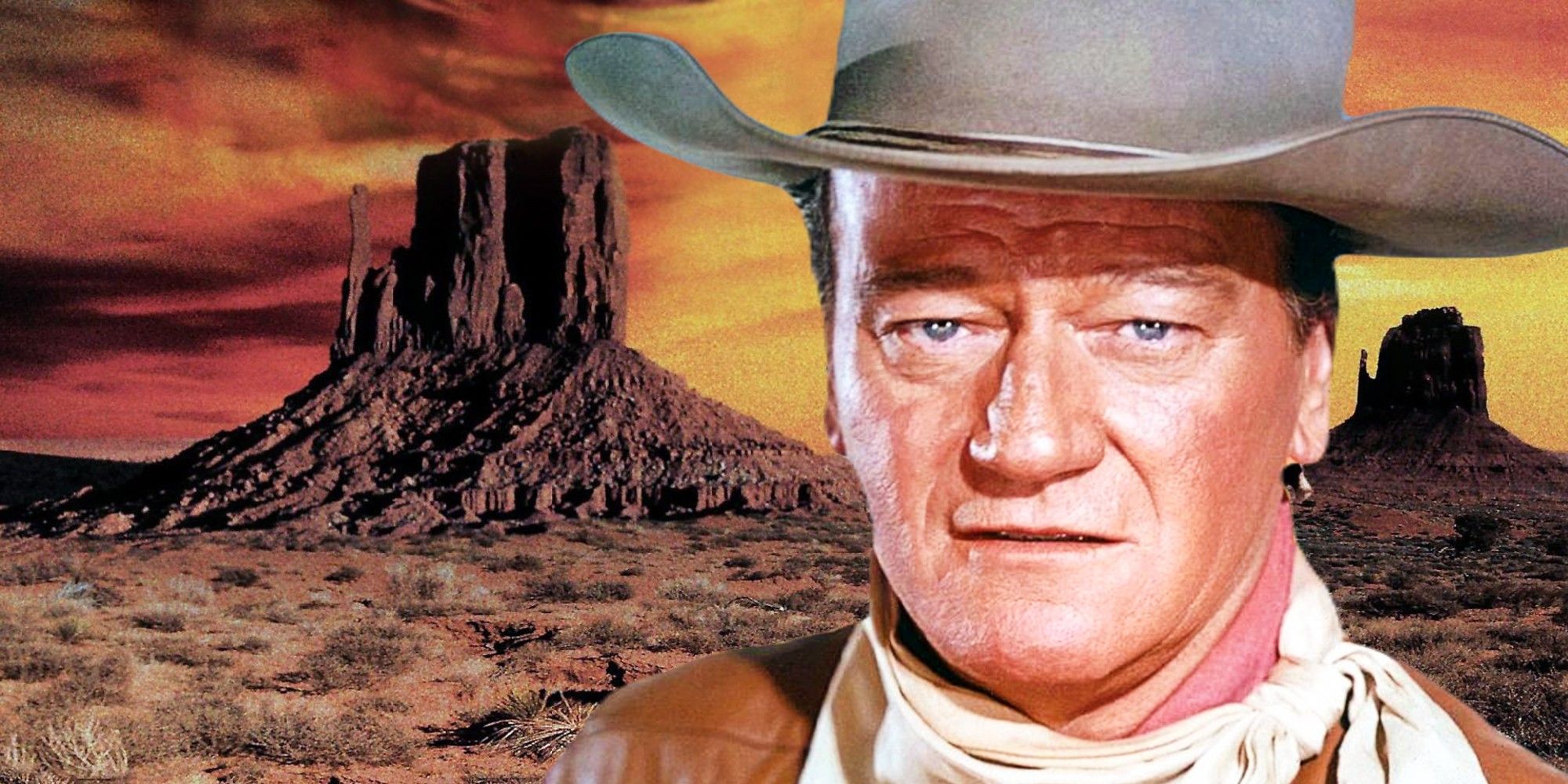
Audiences Wanted Westerns That Mirrored The Morally Complex Society Of The Time
The landscape of the Western had changed drastically by the end of the 1960s. Not only had the revisionist subgenre (whose durability would carry it all the way 21st century, best exemplified by the 2016 miniseries Godless) captured the hearts of audiences, but spaghetti Westerns especially had rewritten the laws of the genre entirely.
A Fistful of Dollars (1964) — a remake of Kurosawa’s Yojimbo (1961) — marked the dawn of a new age of cowboy pictures, spearheaded by Eastwood, Charles Bronson, and Franco Nero. The new generation preferred a grittier, bloodier, and more unapologetic depiction of the Old West, contradicting the great works of Wayne, who came from an old generation of Western romantics.
John Wayne Refused To Star In A Clint Eastwood Movie
Wayne Saw The Collaboration As Favoring Eastwood’s Style Rather Than His Own
B-movie director Larry Cohen envisioned Wayne and Eastwood would work together on a Western that he was writing, The Hostiles, which began coming together in the early 1970s. There’s not much known about the script – other than that it focused on a young gambler and an older man – but Wayne saw it as a continuation of the spaghetti Western trend which he believed was plaguing the genre. In particular, he had been unimpressed by Eastwood’s directorial debut High Plains Drifter (1973), a cynical, aromantic illustration of the Old West. The dispute was unsolved because Wayne’s view of the era — one of nobility and mystique — could not be reconciled with the new interpretations that Eastwood pioneered.


